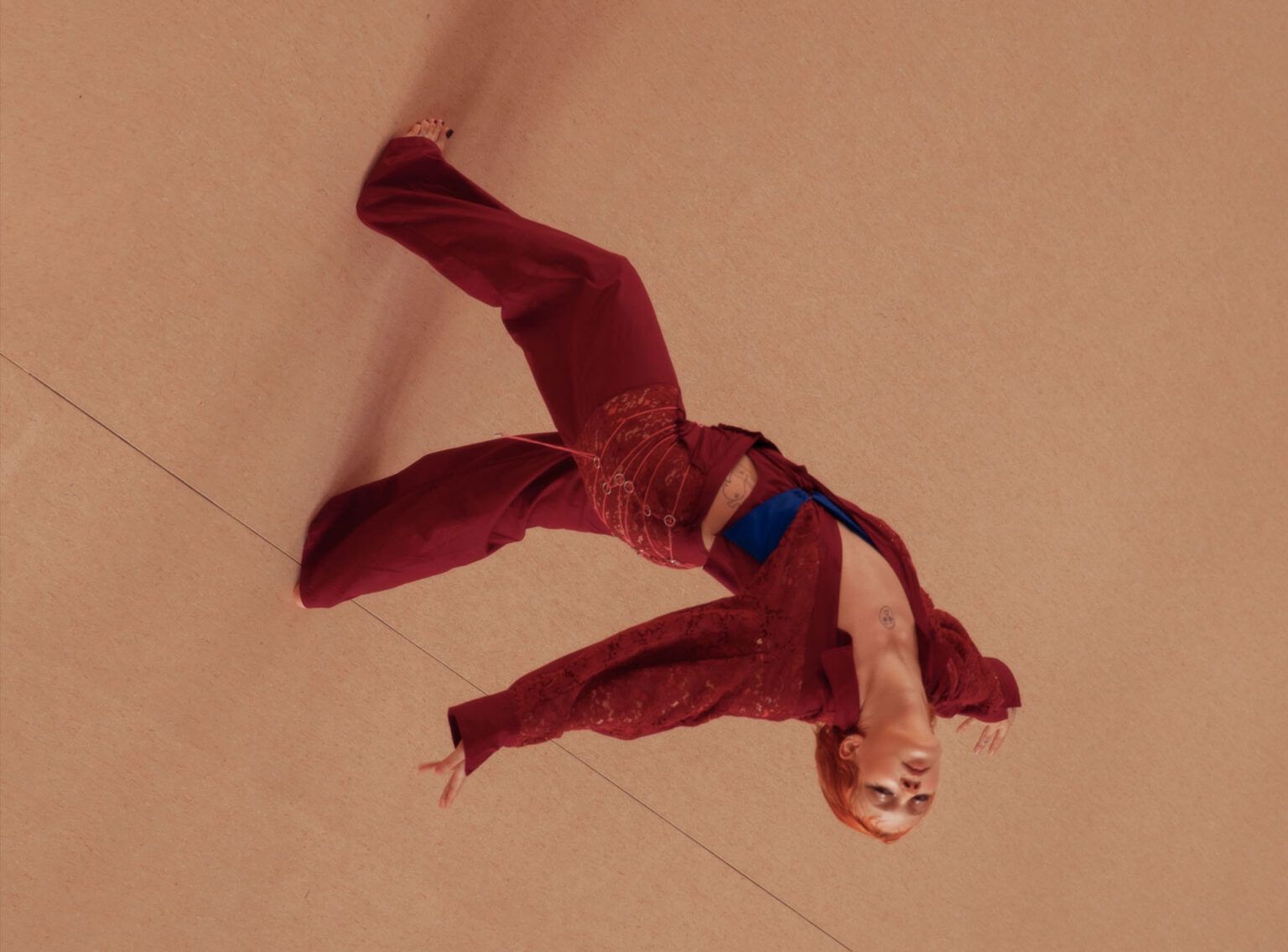Your work stands on the edge of fashion design and performative arts. How would you define yourself – as an artist or a designer?
As it’s said in the question itself, I’m somewhere on the edge. To me, that means I don’t have to stick with definitions, I see it more fluidly. I think it’s a more general question about the whole fashion perspective because what makes fashion more like the design field or performative art movement ? Of course, considering this in general, as an industry, you have to take into account the production process, time consumption, functionality, etc. But no one says that, in the end, it can’t be performance art, even if your main point was to deliver all of those factors but the artistic one. What can define fashion as art or design, it’s the ultimate societal performance around it or maybe something else?
However, for example, if we are talking about the Karusia collection and the small artworks done around it, the roots are definitely stuck in performative arts and that was my aim there. Let’s say I reversed the example I mentioned earlier because I decided to begin with a performative action. In this case, I was curious what will happen if I use the performative practice as a tool to design. I was wondering if it’s even possible to see any outcome. So you can say that I’m switching between.


In one of your earlier interviews, you mentioned that one of your performances was a breaking point in your work. Can you give us an insider view of the performance with the red threads?
So, what happened with the red threads performance were the accidental side results. The perfo wasn’t about the body and sexuality itself in the beginning. It wasn’t even my intention to do so. It was the answer to a school assignment and the topic was “the magic sign”. I chose a red thread as a symbol of protection from “the bad look” and spells. For example, in Polish culture, there existed a ritual to put a red ribbon above the newborn baby’s cradle before baptism to protect the baby from bad spells.
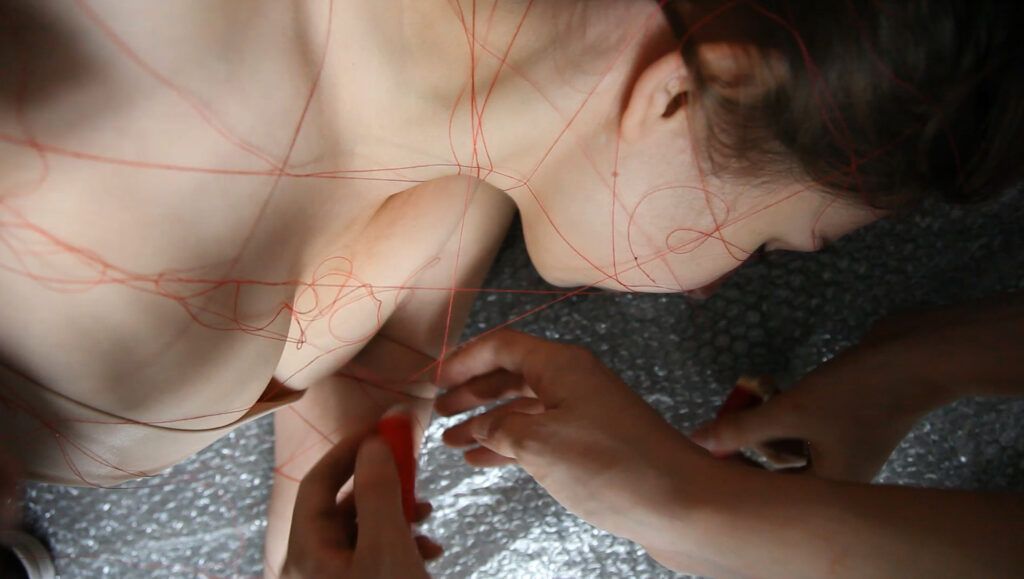


So I put my own half-naked body on the ground and I asked my friends to do whatever they want to me – they could touch me, wrap me around, hold me, etc. Above me was a metal construction with the camera to create something like a “scanner” to follow all of the process. And, you know, I realized that the performance wasn’t about the assignment in the end, it started to become a very personal thing for me.
It was a breaking point for me and I understood the emotions going through when you allow people to possess your body. I was holding onto the thoughts and emotions until my diploma, and with the massive protests against anti-abortion laws in Poland starting at the time when I begun my degree project, all those emotions just boiled in me and had to float to the surface.


Our bodies are the only things we truly own throughout our lives. Do you agree with that statement, and what does the body mean for you in your work?
I would like to agree with the statement but sadly, I cannot. You can truly rethink it when you lose the right to own your body. I think it’s the illusion going on when we are always with our bodies physically and we are taking this “truth” for granted. But what happens when the abortion law is fully resticted and youre choices are limited? When you’re outside of the decision-making process? This is what we experience in Poland or we see what’s going on in the US, for example. What about the war? The rape culture is still alive. And the list of the questions to ask is even longer. You can say I’m talking about extremes but one day something is impossible only for it to be possible the next.
This is what I try to figure out with my art practice and research. I want my body back, even if I’m not sure it’s even possible at all but I’m looking for the gaps. In that moment, I look at the body as an area through which to find answers.

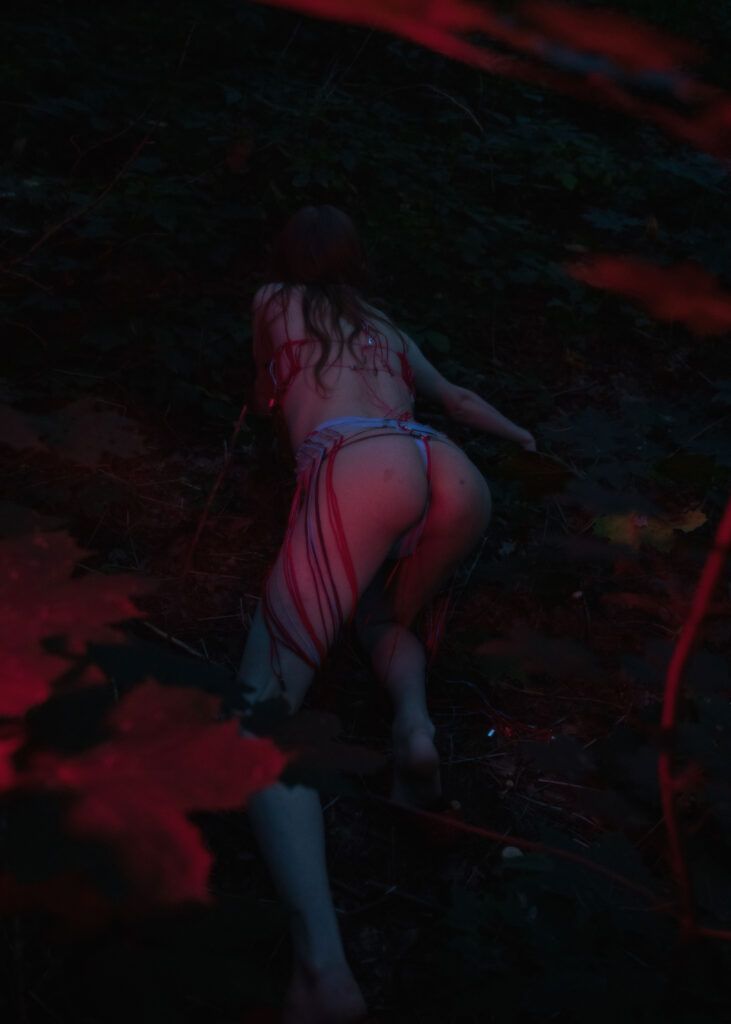

Let’s look at the Karusia collection – the fashion manifesto against slut shaming. What is the essential message you want to convey through the project?
I find Karusia, the main character in the project, to be my alter ego. On one hand, I want to discover the boundaries, define them and push them and see what happens. Maybe Karusia is a protection for me like the red thread was in my performance, it is the space where I can analyze the aspect of owning my body. But that’s the personal side.
The other side of the project is to experience the collective body, to discuss it. What’s the most important is to embrace our sexuality and pleasure, to not be afraid to use symbols of oppression and change their ontology, to try to own the discourse. Slut shaming is used to embarrass us, womxn, by our own sexuality. And I’m not saying that you have to be sexually active or even have to use sex for the empowerment or to show it at all. Do whatever you want with this but don’t allow the surroundings to stop you before looking for answers and exploring your body, potential and pleasure.


Were you successful in encouraging people to have these discussions? If yes, can you sum up the reactions?
During photoshoots and fittings, I heard from my models and people engaging in the process that they felt like they were Karusia. Some of them even made a verb out of the name to describe the feeling! I realized then that it is a performance from the beginning till the end. She is not only my alter ego, she is the character that everyone can experience. So I decided to ask them for their perspective and some of those you can read on my Instagram. The most common answer was that they feel empowered and safe, which made me feel honoured. What I also really appreciated was that our talks were very often about other associations, which came out of the project. I am glad that my work is not about the final answer but the starting point for further discusion and findings.

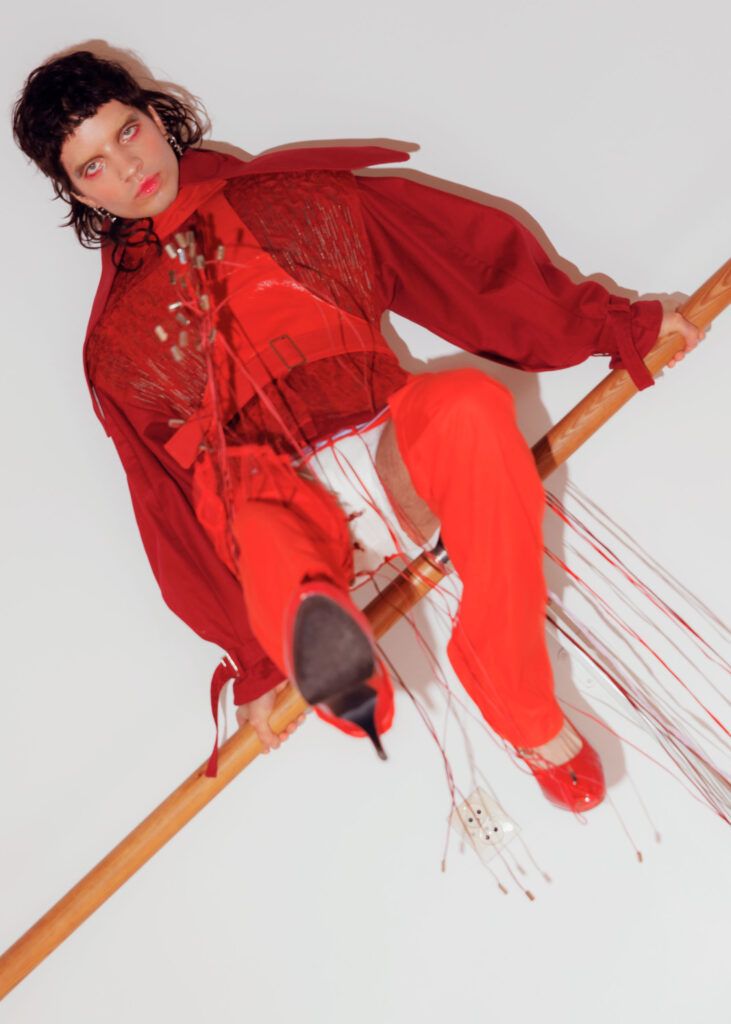
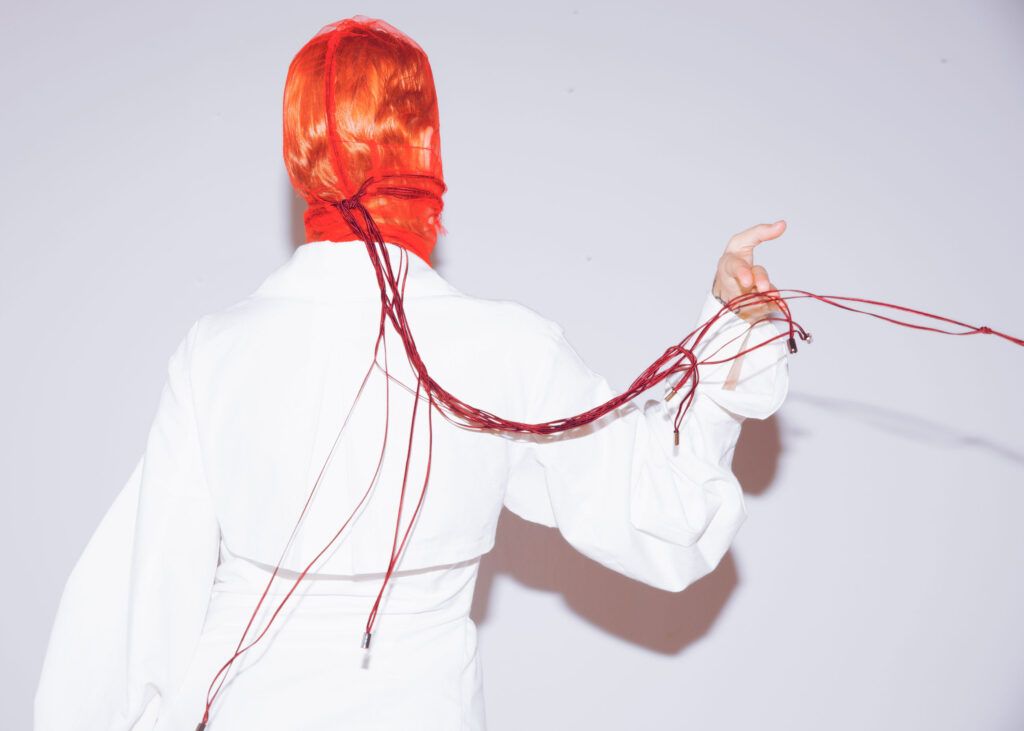
Your work has many narratives and it’s also a personal journey; I wonder what you unexpectedly discovered about yourself after finishing the Karusia collection, can you share it with us?
I realized that I am searching for my own body somehow, and I have a certain obsession with the body itself. When you are growing up in a very catholic community, you learn that the body is not the medium to get to know life and yourself, it’s the profanity; you shouldn’t touch it. So when you decide to leave, suddenly, you can notice how much you can discover by the prism of the body. Even after all this time, I am still discovering, you know? But as an artist and fashion designer, I have the opportunity to study it through other’s bodies. I have some kind of power and even a privileged position but also a place to hide. I wonder if I would be able to get out of it. I think I found the direction and the aim in my artistic path, which is exciting.

Do you plan to continue to push boundaries through the next project?
It’s difficult to say that I’m planning to do something. I think it comes naturally when you’re working on a project. Of course, there is something like an art practice and mine is to use some kind of perversion and shifts as a method to design. But I do not want to put any kind of pressure on myself that I have to do things in a particular way. Because art research and critical approach play a very important role in my designing process, sometimes, I just want to sit and create, you know? And I don’t care then if it pushes the boundaries or not. I am not saying that to act ignorant, I just want to say that sometimes, simply the act of creation itself is okay too.
